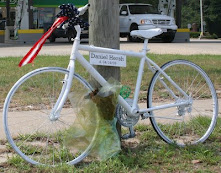Pedestrian crashes occur most frequently in urban areas where pedestrian activity and traffic volumes are greater compared to rural areas...
In recent years, an emphasis has been placed on improving the design criteria used by engineers to ensure that the needs of all users are being met; the Highway Design Handbook for Older Drivers and Pedestrians is one resource...
Speeding is a major contributing factor in crashes of all types. In 2003, speeding was a contributing factor in 31 percent of all fatal crashes. one resource
From the Insurance Institute for Highway Safety:
Speed influences the risk of crashes and crash injuries in three basic ways:From Virginia Department of Motor Vehicles' Drivers Manual:
* It increases the distance a vehicle travels from the time a driver detects an emergency to the time the driver reacts.
* It increases the distance needed to stop a vehicle once an emergency is perceived.
* It increases the crash energy by the square of the speeds. When impact speed increases from 40 to 60 mph (a 50 percent increase), the energy that needs to be managed increases by 125 percent.
According to the Virginia Driver's Manual, cars on dry level pavement stopping distances are from 35mph - 135 ft, from 45mph - 195 ft and from 55mph - 265 ft.Consider this, virtually all things being equal, driving 35mph from Northampton Blvd to First Landing State Park would take an additional 2.7 minutes.





